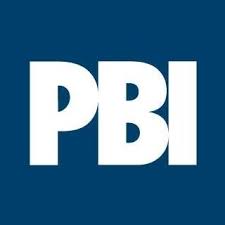PA Federal Business Decisions Volume 18, No. 2
Kelly A. Williams and Henry M. Sneath, Business Decisions Editors (Originally published in the Spring 2013 edition of the Pennsylvania Bar Association’s Civil Litigation Update)
Third Circuit Takes Sides in Circuit Split over TILA Rescission
The Third Circuit took sides in a growing circuit split through its recent decision in Sherzer v. Homestar Mortgage Services, 707 F.3d 255 (3d Cir. 2013). As Judge Hardiman explained on behalf of a unanimous panel, “the question presented by this appeal is simple,” but “the answer to the question is more complicated.”
Under the Truth in Lending Act at 15 U.S.C. § 1635 (“TILA”), borrowers have two opportunities to rescind loans after closing: a) an absolute right to rescind within three days after closing, which the borrower may exercise by sending a letter to the lender; and b) a qualified right to rescind within three years after closing, which exists if and only if the lender failed to provide certain mandatory disclosures at closing. The question presented was whether a borrower who exercises the qualified right to rescind may simply send a letter to the lender giving notice of his or her intentions, or whether that borrower must file suit against the lender and seek a judicial declaration of rescission.
The statutory text is unclear; hence the appeal. The Fourth and Eleventh Circuits have previously held that because the statute does not reference any court process, borrowers may exercise the qualified right of rescission simply by sending a letter to the lender. Gilbert v. Residential Funding, LLC, 678 F.3d 271, 277-78 (4th Cir. 2012); Williams v. Homestake Mortgage Co., 968 F.2d 1137, 1139-40 (11th Cir. 1992). In contrast, the Ninth and Tenth Circuits have held that a rescission cannot occur until either the parties agree to it, or a court issues an order granting it. Thus, if the parties do not agree, the borrowers must file suit within the three-year window after closing to exercise their qualified right to rescind. Rosenfield v. HSBC Bank, USA, 681 F.3d 1172, 1188 (10th Cir. 2012); McOmie-Gray v. Bank of America Home Loans, 667 F.3d 1325, 1326 (9th Cir. 2012).
In Sherzer, the Third Circuit concluded that: 1) the statutory text does not mention a court process as a requirement for rescission under TILA; and 2) “TILA is a remedial statute that we must construe liberally.” It considered and ultimately rejected arguments, by the lender before it and by its amici, regarding possible legal and practical problems with allowing rescission on demand even months or years after closing. The Third Circuit therefore joined the Fourth and Eleventh Circuits in holding that a borrower may exercise the qualified right of rescission under TILA by giving the lender written notice of his or her intentions within three years of closing; the borrower need not go further and file suit.
–Contributed by Jason Spak, Esq., Houston Harbaugh, Pittsburgh, Pennsylvania; jspak@psmn.com
Property Damage Due to Faulty Workmanship Not an Occurrence Under Commercial General Liability Policy
In State Auto. Prop. & Cas. Ins. Co. v. Miller, No. 12-362, 2013 U.S. Dist. LEXIS 39645 (E.D. Pa. Mar. 22, 2013) (opinion by J. Slomsky), the court granted judgment on the pleadings in favor of the insurer, State Auto Property and Casualty Insurance Company (“State Auto”) and against the defendant insured contractor, Bryan Miller (“Miller”), and the defendant homeowners, the Waggamans (“Waggamans”). As a result, State Auto did not owe a duty to defend or duty to indemnify Miller.
State Auto issued a commercial general liability policy, effective from April 30, 2005 to April 30, 2006, to Miller. The policy stated “this insurance applies to…’property damage’ only if . . . (1) The . . . ‘property damage’ is caused by an ‘occurrence’ that takes place in the ‘coverage territory;’ (2) The . . . ‘property damage’ occurs during the policy period. . . .” The policy defined “occurrence” as “an accident, including continuous or repeated exposure to substantially the same general harmful conditions.”
Six weeks after the policy expired, Miller and the Waggamans executed an agreement for the sale of property. On August 18, 2006, the Waggamans and Miller executed an addendum to the sales agreement in which Miller contracted to repair a roof leak on the property. Following Miller’s failure to repair the roof, Miller and the Waggamans entered into another agreement for Miller to the make the necessary roof repairs. Miller again failed to perform the repairs. The Waggamans hired other contractors to make the repairs and sued Miller, seeking damages for the roof repairs and statutory interest from August 18, 2006. As a result, Miller’s counsel requested coverage from State Auto for Miller. State Auto agreed to defend Miller under a reservation of rights but also filed this declaratory judgment action against Miller and the Waggamans.
The court applied the “effect test” to determine whether the property damage was sustained during the policy period. Under this test, “an occurrence happens when the injurious effects of the negligent act first manifest themselves in a way that would put a reasonable person on notice of injury.” Thus, an “occurrence” happens when the injury is reasonably apparent, not at the time the cause of the injury occurs. In the present case, the occurrence could not have happened until August 18, 2006, the date of the settlement, which was after the policy expired. The underlying complaint only sought damages from August 18, 2006 and nothing in the complaint alleged that the roof leak was reasonably apparent to the Waggamans prior to the policy expiring.
To determine whether the property damage was an “occurrence” under the policy, the court applied the Pennsylvania Supreme Court’s decision in Kvaerner U.S., Inc. v. Commercial Union Ins. Co., 908 A.2d 888 (Pa. 2006), noting “the key term in the ordinary definition of ‘accident’ is ‘unexpected.’ This [term] implies a degree of fortuity.” The court also relied upon Specialty Surface Int’l, Inc. v. Continental Casualty Co., 609 F.3d 223 (3d Cir. 2010), which held that “[f]aulty workmanship, even when cast as a negligence claim, does not constitute” an “occurrence” and “damages that are a reasonably foreseeable result of the faulty workmanship are also not covered under a commercial general liability policy.” Miller’s faulty workmanship was the alleged cause of the roof leak. The faulty workmanship and resulting roof leak lacked the requisite fortuity to be considered an accident. Thus, they were not “occurrences” covered under the policy.
As a result, the court held that the damage to the home occurred after the policy had expired and that there was no “occurrence” within the meaning of the policy because the property damage was caused by faulty workmanship and was not an accident.
Permanent Injunction Issued to 7-Eleven Following Franchisee Fraud
The decision in 7-Eleven, Inc. v. Upadhyaya, Civ. Action No. 12-5541, 2013 U.S. Dist. LEXIS 29091 (E.D. Pa. March 1, 2013) (opinion by J. Dubois) centered on alleged fraudulent behavior by owners and employees of a 7-Eleven franchise, Minaxi Enterprises, Inc. (“Minaxi”) in Philadelphia. The court found that 7-Eleven’s termination of the franchise agreement without notice was proper and granted its motion for permanent injunction.
The case revolved around a convenience store franchisee relationship between 7-Eleven and Defendants in which Defendants allegedly failed to properly report sales and information regarding the operation of the store. 7-Eleven’s share of the store’s profits was therefore reduced, and it sought a permanent injunction due to trademark infringement. As a first step, the court examined the issue of whether the franchise agreement was properly terminated and noted that under Pennsylvania law, a party may terminate without notice when there is a breach of contract going directly to the essence of the contract.
After an extensive discussion of the facts surrounding the unrecorded sales, the court found more than sufficient evidence of fraud by Defendants and held that the fraud went to the essence of the contract. The court rejected Defendants’ claims that there was no evidence that they knew or were reckless as to the unrecorded sales, and that there was no evidence that they intended to defraud 7-Eleven. The court cited the precise detail of 7-Eleven’s evidence and the lack of credible testimony by the Defendants.
The court then moved to the four equitable elements in a permanent injunction analysis. Looking first to the Lanham Act, the court found that there was a substantial likelihood of confusion by consumers due to Defendants’ continued use of 7-Eleven’s trademark. The court held that 7-Eleven faced irreparable harm as it had lost control of its trademark in relation to the Defendants’ store and that this loss could not be compensated in monetary terms. Moreover, 7-Eleven suffered irreparable injury from Defendants’ continued occupancy of the store which interfered with 7-Eleven’s use of its property.
Moving to an analysis of balancing hardships, the court was not persuaded by Defendants’ argument that the injunction would result in loss of their livelihoods. As they were found to have committed fraud, they could not now complain of the result. Even assuming that they suffered a hardship, 7-Eleven’s loss of control of its trademark outweighed any hardship suffered by the Defendants. Finally, public interest would be served by granting the injunction due to a general interest in the prevention of fraud as well as an incentive to aid in future accurate sales disclosures and proper collection of taxes.
To conclude, the court briefly addressed Defendants’ argument that 7-Eleven acted in bad faith by failing to provide notice and opportunity to cure the contractual breach and therefore had “unclean hands.” Given that the court previously determined that the termination without notice was proper, the court rejected the bad faith claim and granted 7-Eleven’s motion for permanent injunction.
Court Sanctions Infringer for Violating Permanent Injunction with Improper Product Design Around
In Arlington Industries, Inc. v. Bridgeport Fittings, Inc., No. 3:02-CV-0134, 2013 U.S. Dist. LEXIS 37503 (M.D. Pa. Mar. 19, 2013) (opinion by J. Caputo), Defendant Bridgeport Fittings (“Bridgeport”) entered into a settlement agreement with Plaintiff Arlington Industries (“Arlington”) to resolve a patent infringement dispute between the parties. As part of that agreement, Bridgeport entered into a confession of judgment and agreed to a permanent injunction prohibiting it from selling certain quick-connect electrical connectors.
Bridgeport then redesigned its connectors and began selling them. Arlington moved to hold Bridgeport in contempt for violating the injunction, arguing that the new connectors were simply colorable imitations of the infringing products. The district court agreed and held Bridgeport in contempt for violating the court’s permanent injunction.
To prevail on a motion for contempt for violating a permanent injunction in a patent case, “the party seeking to enforce the judgment must prove both that the newly accused product is not more than colorably different from the product found to infringe and that the newly accused product actually infringes.” Id. at *6 (quoting TiVo, Inc. v. EchoStar Corp., 646 F.3d 869, 882 (Fed. Cir. 2011) (en banc)).
The patent owner bears the burden of proof on both the colorably different and infringement questions by clear and convincing evidence. Id. at *6.
In considering this question, the court began its analysis with the differences between the features that the patentee used to establish infringement and the redesigned features:
The primary question on contempt should be whether the newly accused product is so different from the product previously found to infringe that it raises fair ground of doubt as to the wrongfulness of the defendant’s conduct. If the differences between the modified features and those previously found to infringe are significant, the newly accused product as a whole shall be deemed more than colorably different from the infringing one, and the inquiry into whether the newly accused product actually infringes is irrelevant. However, when a court concludes that there are no more than colorable differences between the infringing product and modified product, a finding that the newly accused product continues to infringe the relevant claims is additionally essential for a violation of an injunction against infringement.
Id. at *7-8 (quoting in part TiVo, 646 F.3d at 882-83) (internal citations and quotation omitted).
The court found that it must directly compare the elements that the patentee previously identified as meeting a claim limitation with the modifications made by the infringer. “An accused product is a colorable imitation of an enjoined product if it is the substantial equivalent of the enjoined product,” meaning that it performs substantially the same function in substantially the same way to achieve substantially the same results. Id. at *9.
The patent at issue involved a method for attaching an electrical cable to a junction box. In an attempt to design around it, Bridgeport modified two parts, making a formerly cylindrical component more conical in shape and modifying an adapter with lugs.
The court heard testimony from experts for both sides, who presented testimony as to why the modifications were or were not (in their opinions) colorably different from the prior infringing device. After weighing the evidence, the court concluded that the modifications were not more than colorably different than the infringing device. The court then analyzed whether the modified product infringed the patent and ultimately decided that it did.
The court concluded that Arlington successfully demonstrated by clear and convincing evidence that Bridgeport violated the terms of the permanent injunction, which resulted in the court holding Bridgeport in contempt.
Willful Infringement Sufficiently Pled to Survive Motion to Dismiss
In Brookville Equipment Corp. v. A.L. Lee Corp., No. 13-cv-0059, 2013 U.S. Dist. LEXIS 40662 (W.D. Pa. Mar. 22, 2013) (opinion by J. Schwab), Defendant A.L. Lee Corporation (“Lee”) filed a Rule 12(b)(6) Motion to Dismiss the willful infringement claim asserted by Plaintiff Brookville Equipment Corp. (“Brookville”).
To establish willful infringement, the Federal Circuit has held that a patentee must: (a) show by clear and convincing evidence that the infringer acted despite an objectively high likelihood that its actions constituted infringement of a valid patent; and (b) also demonstrate that this objectively-defined risk was either known or so obvious that it should have been known to the accused infringer. The Federal Circuit has also held that willfulness does not equate to fraud and that the pleading requirement for willful infringement does not rise to the stringent standard required by Rule 9(b) of the Federal Rules of Civil Procedure. In this regard, district courts are split on the level of detail necessary to plead willful infringement. For example, the Eastern District of Texas has held that a complaint need not detail how the willful infringement occurred, while the District of Delaware has held that a plaintiff alleging willful infringement must plead facts giving rise to at least a showing of objective recklessness of the infringement risk.
In this case, the court analyzed the allegations in the complaint to determine whether sufficient facts were pled to survive a motion to dismiss. In particular, Brookville alleged that on or about November 2, 2011, counsel for Brookville directly notified Lee by letter of its belief that Lee’s rerailer device infringed the ‘190 Patent at issue. Brookville also alleged that counsel for Lee subsequently responded with a letter expressing Lee’s belief that Lee’s rerailer device did not infringe any valid claim of the ‘190 Patent. Moreover, Brookville referenced two additional letters exchanged between counsel concerning infringement of the ‘190 Patent. Finally, Brookville alleged that, notwithstanding Brookville’s notification of infringement, Lee continued to manufacture, sell and offer for sale its infringing rerailer device. Brookville attached the aforementioned letters to its response to the motion to dismiss.
The court explained that generally it cannot consider documents outside the complaint without converting the motion to dismiss to a motion for summary judgment. However, an exception exists when the documents are integral or explicitly relied upon in the complaint. In analyzing the merits of the motion to dismiss, the court found the District of Delaware to be persuasive in that in order to state a claim for willful infringement, the complaint must allege factual circumstances in which the patents-in-suit are called to the attention of the defendant. Moreover, the court agreed that the complaint must demonstrate a link between the various allegations of knowledge of the patents-in-suit and the allegations that the risks of infringement were either known or were so obvious that they should have been known. The court concluded that the letters exchanged between counsel for Lee and Brookville unequivocally demonstrated that Lee was put on notice by Brookville of the existence of the ‘190 Patent and the reasons in which Brookville believed that Lee was infringing the ‘190 Patent. The court, noting that willfulness is a fact-intensive issue that is difficult to resolve at the pleading stage, found that Brookville pled sufficient facts with respect to willfulness to survive a motion to dismiss.







